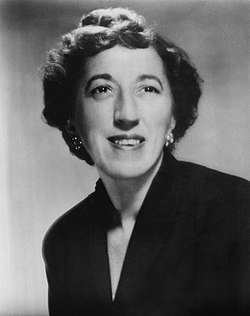
Welcome to WEP's Challenge for 29th-31st October, Ghost Story.
For some reason, October's spooky challenge is usually the high point of our writing year. Halloween is the one night of the year when ghost stories are expected - within the English-speaking world. Here in Sweden, Halloween is a newly introduced way of celebrating a holiday that used to only consist of lighting candles on graves.

I tried writing a ghost story, but my heart was just not in it. What I am offering are some photos documenting my daughter, Elisabet, and her schoolmate, Maria, together with my son, Erik, dressing up and going around our neighbourhood 'trick-or-treating'.

When Elisabet told me that they were going to do this alone, without an accompanying adult, I said no. They are only ten years old and these are apartment buildings, in the middle of city, not a suburban development or farms, where everyone knows everyone.

For two days, I helped Elisabet draw pumpkins, print them out and hand-colour them to make 'Happy Halloween' - cards. (One of the reasons why my ghost-story never was finished. Oh well. Probably no great loss.)

We went to the toy store to buy a new Halloween costume, black garb including a witch's hat with attached green-coloured wig.

I tried writing a ghost story, but my heart was just not in it. What I am offering are some photos documenting my daughter, Elisabet, and her schoolmate, Maria, together with my son, Erik, dressing up and going around our neighbourhood 'trick-or-treating'.
 |
| Elisabet and Matilda, the cat, before Halloween make-up. |

When Elisabet told me that they were going to do this alone, without an accompanying adult, I said no. They are only ten years old and these are apartment buildings, in the middle of city, not a suburban development or farms, where everyone knows everyone.

For two days, I helped Elisabet draw pumpkins, print them out and hand-colour them to make 'Happy Halloween' - cards. (One of the reasons why my ghost-story never was finished. Oh well. Probably no great loss.)
 | ||
| Notice the black nail polish om Elisabet's fingers. I applied it. |

We went to the toy store to buy a new Halloween costume, black garb including a witch's hat with attached green-coloured wig.
 |
| Maria and Elisabet apply make-up for their scarey roles. |
 | ||||||||
| Erik as the Grim Reaper! |
 | ||||
| Maria in the middle has chosen to be a vampire. |
Halloween make up inspired by the green-faced wicked witch of the west from the 1939 film, The Wizard of Oz. Many of you may remember this film. I do. This is Margaret Hamilton, who played the double role of Miss Almira Gulch / The Wicked Witch of the West. (I'm looking for a photo of Margaret Hamilton with green face makeup, but can't find any.)
 |
| Click on image to get to Wikipedia |
 |
| Maria threatens to drink my blood. Elisabet casts a spell. |
 |
| Click on image to get to Amazon UK |
 |
| They are off, and the weather has been unusually mild. |
 | |
| My trio marching towards their first victims. |
Surprisingly, they were given quite a lot of candy! I expected them to come home empty-handed, as this is too new of a practice. It is not a Swedish tradition, and I have mixed feelings about its introduction. But since I took a course in ethology in my youth, I understand that there is always a reason for why people start celebrating holidays. My immediate guess is that this is a tradition that appeals to the 'tweens', or 'pre-teens', eight to twelve year-olds, just my children's age right now.
There is a Swedish begger-tradition, with the children dressing up as Easter-witches with broomsticks and copper-kettles, and go around giving neighbours handmade cards with 'Glad Påsk!' (Happy Easter!) on them. But this is a tradition for small children, and mother usually tags along, at a distance if nothing else.
My guess is that Halloween appeals to pre-teen children because it is a first step toward independence. And there is so much from the outside world (read= English-speaking world) that supports the mythology of ghosts, witches and vampires, that are the stock characters for this holiday. And it feels a little dangerous for a ten-year-old to dress up like a banshee and actually knock on neighbours' doors.
I compromised. I let the girls do this if they let Erik go with them.
Erik claims that celebrating Halloween comes from Germany. I'll have to check on that. The Christmas tree came from Germany with Martin Luther. Or so my mother told me once when I was a child. I'll have to check on that too.
When dividing up the spoils of the afternoon (they came home before dark), they put everything that they did not like in a pile - liquorice, tough so-called chewy sticks, sour drops and bad chocolate - and gave it to me. Thank you sweetums!
 |
| Dividing the spoils |
Word count according to WordCalc: Not Applicable.

Best wishes,
Anna

First Commenter:
D.G.Hudson
Rainforest Writing









